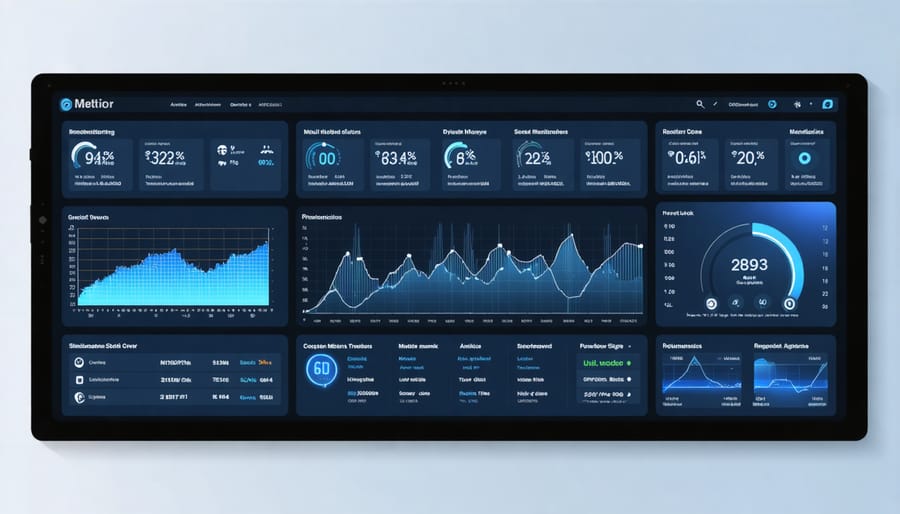Proactive customer service transforms the traditional reactive approach into a strategic advantage that anticipates and addresses customer needs before they become issues. Instead of waiting for customers to report problems, forward-thinking solar companies are leveraging data analytics, automated monitoring systems, and predictive maintenance to identify potential challenges early. This approach not only reduces customer frustration but also builds lasting trust and significantly increases customer retention rates.
By implementing proactive strategies like scheduled maintenance checks, personalized energy consumption reports, and automated system health updates, businesses can demonstrate their commitment to customer success while minimizing service interruptions. Studies show that companies practicing proactive customer service experience up to 30% lower support costs and maintain customer satisfaction rates above 90%.
This shift from reactive to proactive service isn’t just about preventing problems—it’s about creating an exceptional customer experience that drives long-term loyalty and positions your solar business as a trusted energy partner rather than just a service provider.
What Makes Customer Service Truly Proactive?

Reactive vs. Proactive: The Key Differences
Traditional reactive customer service waits for problems to arise before addressing them. When customers encounter issues, they reach out through support channels, and only then does the company take action. This approach, while common, often leads to frustrated customers, longer resolution times, and increased support costs.
In contrast, proactive customer service anticipates and addresses potential issues before they impact customers. Instead of waiting for complaints, companies actively monitor their systems, communicate updates, and provide solutions in advance. For example, proactively notifying customers about scheduled maintenance, sending installation guides before delivery, or checking in after service completion demonstrates attention to customer needs.
The key differences lie in timing and impact. Reactive service focuses on problem-solving after issues occur, while proactive service emphasizes prevention and customer satisfaction. Proactive approaches typically result in higher customer retention rates, reduced support tickets, and stronger brand loyalty. By investing in preventive measures and maintaining open communication channels, businesses can create more positive customer experiences while reducing the resources needed for problem resolution.
Essential Elements of Proactive Solar Customer Communication
Automated Performance Monitoring
Modern proactive customer service relies heavily on sophisticated solar performance monitoring systems that work around the clock to ensure optimal system operation. These automated tools continuously track vital performance metrics, energy production levels, and system health indicators, enabling service teams to identify potential issues before they escalate into major problems.
When these systems detect anomalies, such as unexpected drops in energy production or unusual voltage patterns, they automatically trigger alerts to service technicians. This real-time monitoring allows companies to dispatch maintenance crews proactively, often resolving issues before customers even notice any impact on their system’s performance.
The beauty of automated monitoring lies in its ability to analyze patterns and predict potential failures based on historical data. For instance, if a particular component shows signs of deteriorating performance, the system can flag it for replacement during routine maintenance, preventing unexpected breakdowns and maintaining consistent energy production for homeowners.
This preventive approach not only enhances customer satisfaction but also extends the lifespan of solar installations while maximizing their energy-generating potential.

Scheduled Maintenance Updates
Regular maintenance updates are a cornerstone of excellent customer service in the solar industry. By implementing a structured preventive solar maintenance schedule, companies can address potential issues before they escalate into major problems. This proactive approach involves sending timely notifications about upcoming inspections, cleaning services, and system optimization checks to customers.
Effective maintenance scheduling not only ensures optimal system performance but also demonstrates a commitment to customer satisfaction. Companies should communicate maintenance dates well in advance, provide flexible scheduling options, and share detailed information about what each service entails. This transparency helps customers understand the value of regular maintenance while building trust in the service provider.
Additionally, maintaining detailed records of all scheduled updates allows companies to track system performance, identify patterns, and make data-driven recommendations for system improvements. This systematic approach to maintenance helps prevent unexpected downtime and extends the lifespan of solar installations while keeping customers informed and satisfied.
Weather Impact Alerts
Proactive weather alerts demonstrate a commitment to customer care by keeping homeowners informed about potential impacts on their solar systems. When severe weather is forecasted, sending timely notifications about storm preparations, system shutdown procedures, or necessary maintenance helps prevent damage and ensures optimal system performance. These alerts can include specific recommendations for protecting solar systems from weather events like hailstorms, high winds, or heavy snow. By providing advance warning and clear instructions, solar providers help customers take preventive action rather than dealing with aftermath repairs. This approach not only safeguards the customer’s investment but also builds trust and demonstrates expertise in system care. Regular weather-related communications can include maintenance reminders, seasonal adjustment recommendations, and tips for maximizing system efficiency during extreme weather conditions.

Building Long-Term Customer Relationships Through Proactive Care
Building lasting customer relationships requires more than just reacting to problems as they arise. Proactive customer service creates a foundation of trust by anticipating and addressing potential issues before they impact the customer experience. When businesses take the initiative to reach out first, customers feel valued and supported throughout their journey.
Regular check-ins, maintenance reminders, and personalized updates demonstrate a commitment to customer success that goes beyond the initial sale. For example, sending seasonal maintenance tips or performance reports shows customers you’re invested in their long-term satisfaction. This approach not only prevents potential issues but also creates opportunities for meaningful engagement.
By maintaining open lines of communication and providing valuable information proactively, businesses can transform one-time buyers into loyal advocates. Customers appreciate when companies take the time to understand their needs and provide solutions before problems escalate. This level of care often leads to increased customer retention and positive word-of-mouth referrals.
Moreover, proactive service allows businesses to gather valuable feedback and insights that can drive continuous improvement. When customers see their input being actively sought and implemented, it strengthens their connection to the brand and increases their likelihood of remaining loyal over time. This two-way relationship builds a strong foundation for sustainable business growth and customer satisfaction.
Regular proactive touchpoints also provide opportunities to educate customers about new products, services, or industry developments, positioning your business as a trusted advisor rather than just a service provider.
Proactive customer service is a game-changer for businesses looking to build lasting relationships with their customers. By anticipating needs, preventing issues, and maintaining open communication, companies can significantly reduce customer complaints while increasing satisfaction and loyalty. The benefits are clear: lower support costs, higher customer retention rates, and a stronger brand reputation. To implement proactive service, start by analyzing your customer data to identify common pain points, then develop preventive solutions and communication strategies. Train your team to spot potential issues early and empower them to take initiative. Remember, the goal is to solve problems before they arise, creating a seamless experience that turns customers into advocates. Make proactive service a core part of your business strategy, and you’ll see the positive impact on both your bottom line and customer relationships.









